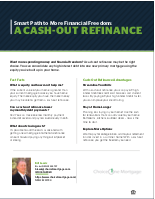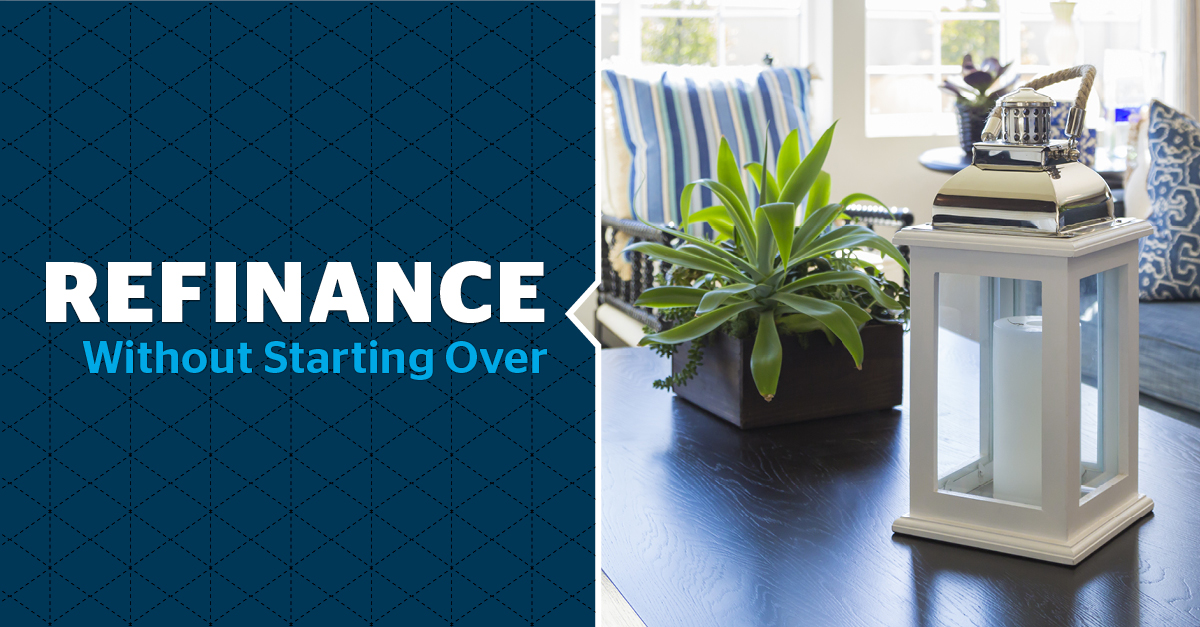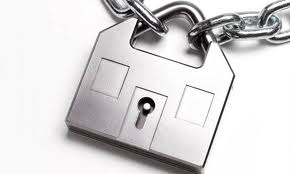When it comes to a California mortgage refinance, there is no “one-size fits all” solution. Even though lenders are using similar underwriting guidelines these days, there are still differences impacting what each can offer you.
This is important stuff, and most So Cal homeowners that we talk to are unsure about how to avoid common mistakes.
While this article offers tips on how to get the best mortgage, and we think you should read about all of them, here is a quick list of our recommendations:
- Try to improve your Credit Scores.
- Interview two or three loan officers – from different lenders.
- Identify clear goals and objectives for your refinance.
- Understand how a mortgage refinance will impact paying off your home.
- Get a complete breakdown of all costs.
Now let’s dive in deeper and look at these tips in more detail.
Mortgage Refinance Tip #1 – Take steps to improve your Credit Scores
It is important to understand that you cannot rely on credit scores from free online credit providers, like Credit Karma for example. The scores generated by most free services are called “educational” or “generic” and are not the scores used by mortgage lenders. We cannot use these credit reports! The reports we pull have scores that are developed specifically for the mortgage industry. I can’t tell you how many times people have called me telling what their scores are, only to find they are dramatically lower when we run their credit report.
We have a unique program called “Fresh Start”. When we see a situation where our borrower’s credit scores are low (or just below an important threshold) our Fresh State Team analyzes the credit report and advises us on specific things the borrower can do to raise their scores.
This is a FREE service that we offer to all of our clients! Here are some typical recommendations they come up with:
First, make sure you do not have unpaid credit accounts or collections. These will obviously drop your credit scores.
Second, pay down your credit card balances. “Maxing” out your credit cards will look bad and also drop your scores.
Third, don’t allow multiple lenders to run your credit report. Each one will create an “inquiry” on your report, and these can lower your credit scores. Although the impact to your credit score may only be minor, anything that causes your scores to drop is a bad thing right!
A simple solution to this is to only allow one lender to run your credit report. Ask them for a copy of the report – most good loan officers will accommodate you. You can then just let other lenders know what your scores are – better right!
Many things in the credit business are determined by credit score tiers. For example, a credit score between 700 and 720 may get you a particular rate at 0 point cost. A credit score between 680 and 699 might get you that same rate but at a cost. These are called Loan Level Pricing Adjustments and represent the risks to lenders that are posed by borrowers with lower credit scores.
Now let’s look at an example. Let’s just say that you start out with a credit score of 700. You call a few lenders, tell them all to run your credit report all in the goal of getting a few quotes. But wait, your score drops to 698!
You can see the impact this has on the rate you get, or more specifically, the cost for that rate.
Here is an even worse scenario. In one particular mortgage refinance scenario we came across, the minimum credit score to qualify for an FHA loan was 640. Our client told us they were told that their credit score was 638. When pressed further, they said they had four or five lenders run their credit report. The is no way to know for sure, but it is safe to say that all of those inquiries lowered their credit score below the 640
Mortgage Refi Tip #2 – Find and interview two or three loan officers – from different lenders!
It’s really important to find a knowledgable loan officer, but perhaps more importantly, one that you can trust.
Ask your friends and relatives for referrals. Chances are that if you find a lender that has done good work for someone you know and trust, this will lead to a good outcome.
If you can’t find a good referral, call a few lenders. The important thing is to get at least two or three people on the phone, pick their brains and get a sense of who you want to work with.
Ask each of the loan officers what makes them different from other lenders? What unique programs, rates or pricing advantages can they offer you?
Mortgage Refi Tip #3 – Identify clear goals and objectives for your refinance – and discuss them with the loan officer you choose
What are you trying to accomplish by refinancing your mortgage?
- Do you want to lower your rate and payment? How much can refinancing save you on a monthly basis?
- Do you want to pay off your home faster? Shortening the term of your loan can save you thousands of dollars in the long run. If you can commit more of your budget to your mortgage payment, this is well worth considering.
- Do you need to convert an adjustable-rate loan to a fixed-rate loan? With fixed rates near historic lows, this is a good time to reduce interest rate risk.
- Do you need to pay off credit cards or get cash out? A debt consolidation loan may be the best
solution for your overall debt picture. Mortgage rates are typically much lower than credit card rates so this can make a lot of sense.
Click on the image below to learn more about a Cash-out refinance.

Refinance Tip #4 – Understand how refinancing will impact paying off your home
If you plan on staying in your home, it’s also good to think about paying off your mortgage before you retire. Ask your loan officer to show you options for shorter-term loans. This strategy can help you avoid thousands of dollars in interest expenses and get you free and clear sooner.
I have recommended a very helpful strategy for many refi clients. Let’s say you have a 30 year fixed rate loan with 27 years left on the loan. If you refinance to a new 30 year fixed, you are adding 3 more years onto the backend of the loan. This may be ok if you don’t plan on staying in the home, but it would nice to avoid the extra payments if you do stay, right?
With our “Yourgage” program it’s a no-brainer! You simply set up the new loan with a
Mortgage Refinance Tip #5 – Get a complete breakdown of all costs – and ask about your options to lower them!
Ask the loan officers you interview to provide a complete breakdown of all of their costs. A refinance involves multiple vendors and each one may charge a fee or fees. Have a discussion about all of the costs, which vendor is charging which fee, and if it is possible to get them reduced or waived.
Look out for things called “Administration fee” or “Processing fee”. Not all lenders or brokers charge these, but when you see them, they usually represent pure profit. All lenders typically charge an “Underwriting fee” (usually around $950), but if you see the other fees as well, watch out.
Lenders also will allow you to choose a higher interest rate and give you a
Keep in mind that closing costs from refinancing may increase your loan balance. If so, ask your loan officer to determine your “breakeven point” – the point at which the monthly payment savings overtake any increase in your principal balance.
Mortgage Refinance – Conclusions from a top-rated mortgage lender
For most people, a mortgage is the biggest component of their overall debt picture. Understanding the choices and variables at play will help you make good decisions when shopping for a new mortgage.
When taking out a new mortgage, your primary focus should always be to reduce the costs of the loan! There are two components to this – the interest charges over the life of the loan and closing costs that are charged on the transaction.
The more money you can save over the life of the loan, the more you will have for more important things – like a happy retirement!
But, perhaps most important of all, there is no substitute for working with an honest and trusted professional. Call Bill Lewis at Choice One Mortgage today. He certainly checks all of the boxes! Here are some great tips when buying a new home and trying to get a Purchase Mortgage.




